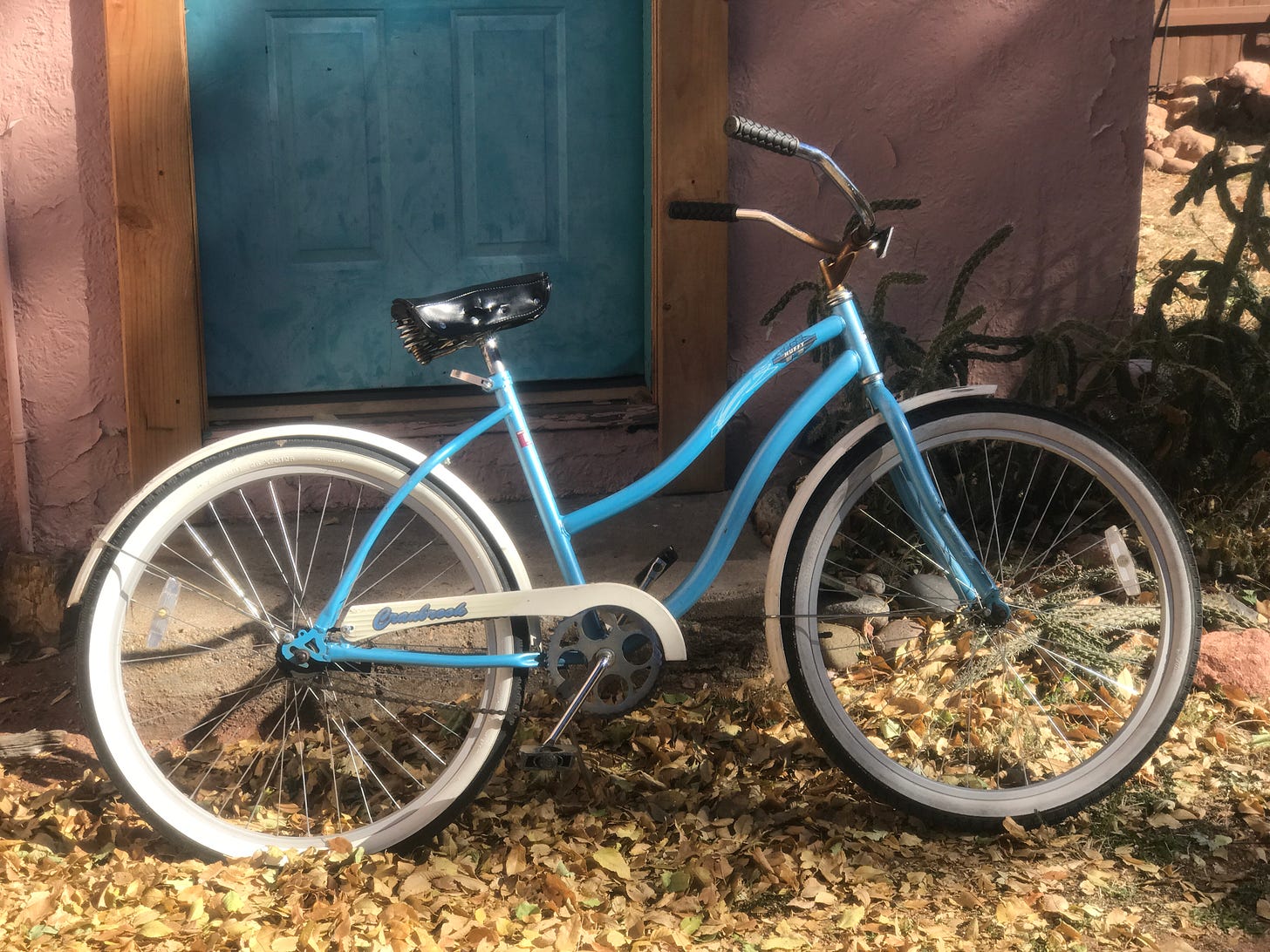How Can Healing be a Spiritual Practice?
Trauma in the Pews 2.0 Section III: Healing Practices for Post-Traumatic Spiritual Growth
Over the summer the Trauma in the Pews 2.0 Community worked through Section Two which answered the question: “How can spiritual practices help me heal from the impact of trauma?” This post introduces Section Three which will answer the question, "How can healing open the door to post-traumatic spiritual growth?”

The story of Emily winds through the book just as Nathan's story did in Trauma in the Pews. See the resources at the end for the links to the posts with the first two parts of Emily’s story.
Emily’s message said, “It’s a spark!” and arrived with a photo of a blue bicycle. I smiled because receiving pictures of bicycles truly was a spark! They began arriving in messages, emails, and texts soon after publishing Brave. The blue bicycle on the book cover was quickly embraced by readers as a symbol of my work and healing.
Along with spotting sparks, Emily was beginning to believe it might be possible that God loved her, and she was open to looking at spiritual practices differently. She sometimes sent me her thoughts while reading a preview of Section II. One of her first messages said, “You are right, it is impossible to do most of those first practices while my brain and body want to escape the room. That isn’t my fault, is it?” No, Emily, that is not your fault!
Emily agreed to watch for moments when she could use self-regulation skills (breathing, grounding, etc.) as mini-meditations during her day. After a few days, she wrote, “It is remarkable how taking a few deep breaths before entering a room helps me. It does feel like a tiny moment with God. And not in a bad way.” Yes, Emily, living and spirituality can go together!
Sometime later, she wrote, “I never thought about using the pause space to not run out of the room during silent prayer times. Sometimes I did leave; other times, I dissociated. My body needed to know I was not in danger. I never realized it felt like danger was lurking when I closed my eyes. I am working on that but closing my eyes isn’t even necessary, is it?” No, Emily, there is no correct way to participate in spiritual practices!
After writing back and forth about using agency to prevent making choices based on old neural pathways, the following message appeared: “I found one! I found a pattern! Someone said something to me, and I felt the trigger flood me. I realized what was happening and found the pause space. Then, even after reflecting on the situation, I almost chose to do something that would only make things worse! I made a different choice—one that felt safe.” Yes, Emily, that is exactly how the process of self-regulation, the pause, and agency works!
Then Emily wrote, “I think I get it. The spiritual practice of healing is healing. You can’t force yourself to heal and you can’t force yourself to be spiritual. But it is possible to heal and that can help you to draw closer to God. I am still not completely convinced God loves me, but there are moments when it feels possible.” Yes, Emily, this is why healing is a spiritual practice!
The driver's seat analogy demonstrated that healing as a spiritual practice places you and the healing process in the driver’s seat with the spiritual practices that support healing in the passenger seat. You are both headed to the same destination—drawing closer to God. Your faith becomes a trusted companion that provides guidance and makes every trip around the sun better, easier, and safer.
Creating a Plan for a Spiritual Practice of Healing
Keep reading with a 7-day free trial
Subscribe to Janyne McConnaughey to keep reading this post and get 7 days of free access to the full post archives.



